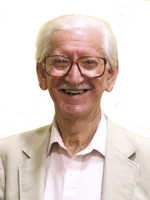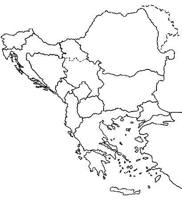
|
The Society of Folk Dance Historians (SFDH)
There's Something About Kolos
[
Home |
About |
Encyclopedia | CLICK AN IMAGE TO ENLARGE |

|
 This year (2015), the big Kolo Festival is coming to St. Anthony Croatian Church in June. Some elaborations are desirable on points mentioned in an earlier issue of Folk Dance Scene, so let me ramble on about my favorite dance form.
This year (2015), the big Kolo Festival is coming to St. Anthony Croatian Church in June. Some elaborations are desirable on points mentioned in an earlier issue of Folk Dance Scene, so let me ramble on about my favorite dance form.
Kolos only come from the Croatian and Serbian areas of former Yugoslavia. Nearby Balkan countries have similar circular dances, each with its own generic name, such as, oro in Macedonia, horo in Bulgaria and Greece, bar in Armenia, hora in Romania and Israel, etc. Kolo simply means "circle or wheel," hence circle dance. It is a generic name in that dances that are danced in couples or trios also are termed kolos. Actually, the plural is kola; compare that with the young here using "my wheels."
As with other dances in other cultures, kolos have changed with time and place. Ljubica and Danica Janković, in their eight volumes of kolo descriptions, listed hundreds of them as being danced in the 19th century with much information about leadership, purpose, history, and general culture of the dances. With the emigration of Croatians and Serbians to America (mostly 1890 to 1914) came the enjoyment of the tamburitza instruments, songs, and dances of the homeland. We don't know much about the early years, but by the time the next generation began dancing, changes to the dances had occurred, creating an American culture of kolos, much different from what the Janković sisters described. For instance, some dances that were done in a closed circle became an open circle with a leader; the basket hold disappeared; the winding-up was minimized. I think, however, the boy-meet-girl aspect was still much in evidence.
Kolos were learned from the ethnic communities (as were nearly all of the folk dances in the beginning), and were taught by Vyts Beliajus in Chicago and Michael Herman in New York who taught folk dance groups as early as the 1930s. It became popular in California around 1950, thus becoming the third venue and culture, with more changes.
To illustrate what some of these changes are, to what I term as the culture of kolos of 19th century Serbian and Croatian areas (then Croatia with Vojvodina provinces a part of the Austro-Hungarian Empire and in Serbia a monarchy) and the century plus of kolo dancing in America and today's dancing, let me give some examples. Starting with the music, the leader for the dance is usually there and ready to lead, probably with a friend or two who will join as will others. Later comers join next to their friends, next to good dancers, a man next to two women (the logical formation), a young man with eyes open next to a young girl, etc. No mention made about joining at the end of the line. Originally it would have been a no-no because the leader already appointed a friend to that reserved position! It even has a name: "keć," defined in the dictionary as "the last person in a kolo dance." That person has a job or two. When the kolo leads in the opposite direction, the keć is the leader but the main duty is to keep the center of the floor clear so that the leader will have enough room to dance around and not have to wind up earlier than wanted.
In this category there are some things that we do unconsciously or by rote, such as breathing, walking, and even dancing. Holding hands in the circle was that way until relatively recently. In joining hands, any comfortable hold should be considered correct. Ethnics hold hands in any old way as you can see on YouTube (which is great for kolos and all Balkan dances). The leader's role has been downgraded in both American-ethnic and folk dancing to where he or she is not much more than the first person dancing. It is not "his" dance in that he didn't pay the orchestra for it nor request that particular kolo; he does not "describe" the dance showing the steps; is not allowed warm-up walking steps a few times; and cannot signal the orchestra "dosta" (enough) which was usually done by winding up the kolo into a spiral.
Aside from a few points, the purpose has always been the enjoyment of the dance. There is very little that is wrong, and even better, a whole lot that is correct. The greater your joy and thrill in dancing, the better!
DOCUMENTS
- Croatia, a country.
- Ivan "John" Filcich, an article.
- Kolo, Some Background, an article.
- Serbia, a country.
- Yugoslavia, a former country.
Used with permission of the author.
Printed in Folk Dance Scene, June/July 2015.
This page © 2018 by Ron Houston.
Please do not copy any part of this page without including this copyright notice.
Please do not copy small portions out of context.
Please do not copy large portions without permission from Ron Houston.